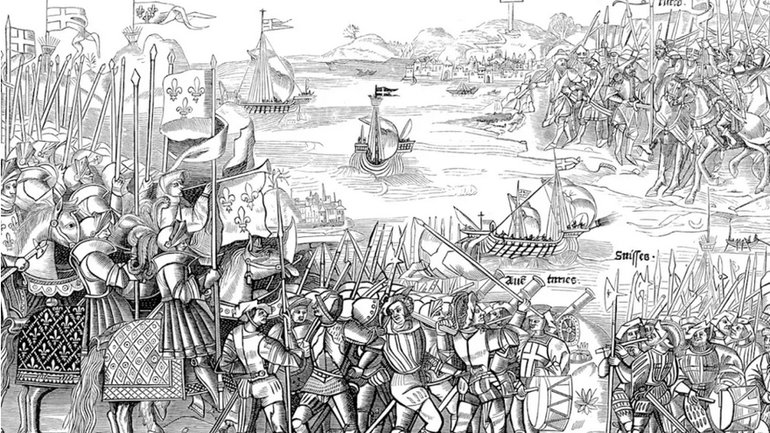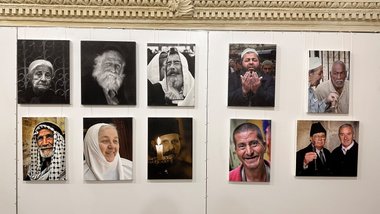The Moscow Patriarchate and the “Struggle for War”

On March 27, 2024, an extraordinary session of the World Russian People’s Council (WRPC) was held in Moscow. Patriarch Kirill personally presided over the congress. The main event of the Congress was the approval of the Edict (in Russian: Nakaz) of the XXV World Russian People’s Council, “The Present and Future of the Russian World.” The text of the Nakaz is full of scandalous statements that have already caused a considerable resonance. The so-called special military operation is declared a “holy war,” and Russia is proclaimed the “Restrainer” (κατεχων) protecting the world from “the West that has fallen into Satanism.” The goal of the “holy war” is declared to be the incorporation of the entire territory of Ukraine “into the zone of Russia’s exclusive influence.” Ukrainians are called “Malorussians” or “Little Russians” in the Nakaz and declared a sub-ethnos of the “Russian people,” and the “Russian people” itself is called “triune.” Let me remind you that the terms “Little Russia” and “Malorussia” in relation to Ukraine and Ukrainians were used in the Russian Empire. These terms were part of the official Imperial policy. Even in the Soviet period, these terms were considered offensive and were not used. But at the beginning of the 21st century, this seemingly forgotten imperial discourse received new breath in Russia.
Each of the statements of this Nakaz deserves a separate commentary, but we will consider only one of the above-mentioned topics: that of “holy war.”
The Russian Orthodox Church and the “Theology of War”
It is worth recalling a relatively recent episode from the life of the Russian Orthodox Church (ROC). In the fall of 2015, when the Russian military operation in Syria began, Archpriest Vsevolod Chaplin, head of the Synodal Department for Church and Society Coordination, called it a “holy struggle” against terrorism. This statement caused significant international scandal. Christian leaders in the Middle East immediately disassociated themselves from Chaplin’s words. For example, Bishop Elijah Toumeh of the Patriarchate of Antioch then stated: “There can be no holy war in Christianity! Whether anyone agrees with it or not.”
The extremist Islamic State responded to Chaplin’s words by calling on Muslims to launch a jihad against Russians.
Chaplin’s scandalous statement cost him dearly. In December 2015, the patriarch fired him from all his main assignments: chairman of the Synodal Department, member of the Interreligious Council of Russia, and deputy head of the World Russian People’s Council. Moreover, in January 2016, in his Christmas interview, Patriarch Kirill had to disavow Chaplin’s words, explaining that “the participation of our people in military operations” corresponds to the idea of a just war (not a holy war).
Thus, the concept of “holy war” was then rejected by the leadership of the Russian Orthodox Church. At the same time, Archpriest Vsevolod Chaplin himself tried to develop a specific “theology of war” even after his dismissal, however, without any success.
And now, more than eight years later, the situation has fundamentally changed. Now “holy war” has become a legitimate word combination, which is used in the document adopted on the initiative of Patriarch Kirill and posted on the official website of the ROC. “The theology of war” is no longer a marginal line of thought for the ROC.
God of War or God of Peace?
The concept of “holy war” has its roots in the Old Testament. It is there that it is repeatedly spoken of as “the Lord’s war”—a war that is waged by direct command of God and in union (synergy) with Him. Moreover, sometimes God Himself slaughters the enemies of His chosen people. For example, in the Book of Joshua it says that the Lord Himself fought for Israel in the liberation of the Promised Land (Nav 10:14). And in the Book of Exodus (if we follow the Hebrew original), it is said explicitly that the Lord is a warrior (Ex 15:3).
The New Testament differs strikingly from the Old Testament in this regard. While in the Old Testament the word war and its derivatives are used more than a hundred times, in the New Testament the noun πόλεμος (war) and the verb πολεμέω (to wage war, to fight) are used only 23 times. Here we no longer see the concept of “the Lord’s warfare.” In the New Testament, war is seen exclusively as the result of the sinful corruption of human nature. For example, the Epistle of James makes it clear that people fight among themselves because they passionately desire something and cannot attain it. It is passionate lusts that drive people to quarrels, fights, and murder (James 4:1-3).
At the same time, more than 90 times in the New Testament, we find the word peace (εἰρήνη) and its derivatives (e.g., οἱ εἰρηνοποιοί, peacemakers). It is not an exaggeration to say that the main content of the Gospel is a message of peace: Jesus reconciles man to God and brings peace to inter-human relations. The angels who appeared to the shepherds at the Nativity speak of peace coming to earth: Glory to God in the highest, and on earth peace, goodwill toward men! (Lk 2:14) Above all, the risen Christ calls peace upon the apostles. Virtually all of Paul’s epistles begin with a wish for peace. Therefore, the New Testament is read as the Book of Peace.
Not surprisingly, in the early centuries of Christianity, the utopian idea of the complete abolition of wars on earth after Christ had come into the world was prevalent.
War: Just or Holy?
Alas, wars did not disappear even after the birth of the Church of Christ. And this became a serious challenge for Christians, in response to which the theory of just war was developed. It was developed, for example, by St. Augustine. He recognized that war is a “barbaric custom,” but in the Christian era it should not be conducted in a barbaric manner. Gradually, under the influence of Christian ethics, particular rules of warfare were formulated. These are, first of all, proportionality of the use of force, inadmissibility of violence against civilians, inadmissibility of torture and cruel treatment of prisoners. At the same time, the Church had to contribute in every possible way to the search for peaceful ways of conflict resolution. And if war did break out, the main task of the Church was to call for the observance of the rules of warfare.
However, in the Middle Ages, during the Crusades, the concept of holy war, which was a clear echo of Old Testament thinking, became widespread. Christians began to believe that warfare could be motivated by the desire to glorify God’s name in the struggle against His adversaries. This concept gained some traction in the Protestant milieu as well. For example, features of “holy war” can be seen in the Puritan Revolution in England and in the colonial wars in Asia, Africa, and the Americas.
From a Just War to a Just Peace
The state of affairs changed in the twentieth century, after the end of the Second World War. In 1948, the challenge of Christian attitudes toward war was discussed at the First Assembly of the World Council of Churches in Amsterdam. The Assembly unequivocally declared that “war as a method of settling disputes is incompatible with the teaching and example of our Lord Jesus Christ,” and therefore “war is contrary to the will of God.” This signified a rejection of the concept of holy war. Since in the modern world wars have gained unprecedented destructive power, the Assembly recognized the need to revise the classical concept of just war as well.
The final document of the Amsterdam Assembly specifically emphasized that the churches “must not allow their spiritual and moral resources to be used by the state in war or in peace as a means of propagating an ideology or supporting a cause in which they cannot wholeheartedly concur.”[1]
As a result, Just-Peacemaking Theory replaced Just War Theory.[2] The phrase theology of peace has become more and more common. Whereas previously the churches saw their task as guaranteeing compliance with the rules of warfare, they now see their mission as active peacemaking, the struggle to preserve peace. The emergence and rapid advancement of nuclear weapons has led the world community to realize that any military conflict now threatens the very existence of humanity. That is why even just wars have become an unacceptable method of conflict resolution.
The “Particular Way” of the Russian Orthodox Church
While Christianity as a whole has traveled a difficult path from a theology of war to a theology of peace over the course of several centuries, Russian Orthodoxy today is rapidly moving in the very opposite direction.
In the second half of the 20th century, the Moscow Patriarchate took an active part in the peace movement. The hierarchs of the Russian Orthodox Church regularly attended various peacemaking congresses, and the Journal of the Moscow Patriarchate was full of articles about the need to keep peace. And now, at the beginning of the 21st century, all this has been completely forgotten and completely discarded. Neither Patriarch Kirill nor other hierarchs of the Russian Orthodox Church speak about peacemaking anymore. And the WRPC, headed by the patriarch, has published a document that tries to find a “sacral” justification for war.
However, as the documents available today reveal, the “peacemaking” of the Russian Orthodox Church in the Soviet years was nothing more than a tool to earn the favor of the atheist authorities. The struggle to preserve and strengthen peace was not at all part of the identity of Orthodox Christians in Russia. Therefore, it is not surprising that after the collapse of the USSR, extremely radical ideas, including attempts to sacralize war, began to spread quite easily in the Russian Church.
Back in 1948, participants in the Amsterdam Assembly warned Christian churches against supporting state ideologies that favor the warfare. But today, Patriarch Kirill and bishops and priests of the Russian Orthodox Church are doing just that: participating in the crafting of a militaristic ideology.
Of course, the WRPC is only a non-governmental organization, and its documents are not normative for the Church. But let us not forget that the VRNS includes dozens of bishops and priests of the Russian Orthodox Church, and the Moscow Patriarch personally heads the WRPC. All of them supported the Nakaz, which is published, among other things, on the official website of the ROC. So the Church in Russia quite has consciously adopted the doctrine of “holy war.” Therefore, the Nakaz of the WRPC is an important milestone on the way of the ROC from the “struggle for peace” to the “struggle for war.”
[1] The first Assembly of the World Council of Churches, held at Amsterdam, August 22nd to September 4th, 1948 / Edited by W.A Visser ‘t Hooft. London : SCM Press, 1949. P. 88-90.
[2] See, for example, Just Peacemaking: Ten practices for abolishing war / ed. by Glen Stassen. Cleveland, Ohio : Pilgrim Press, 1998.










